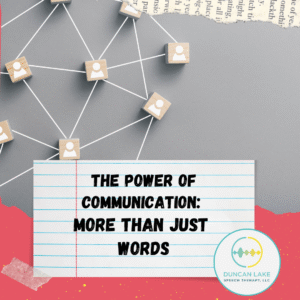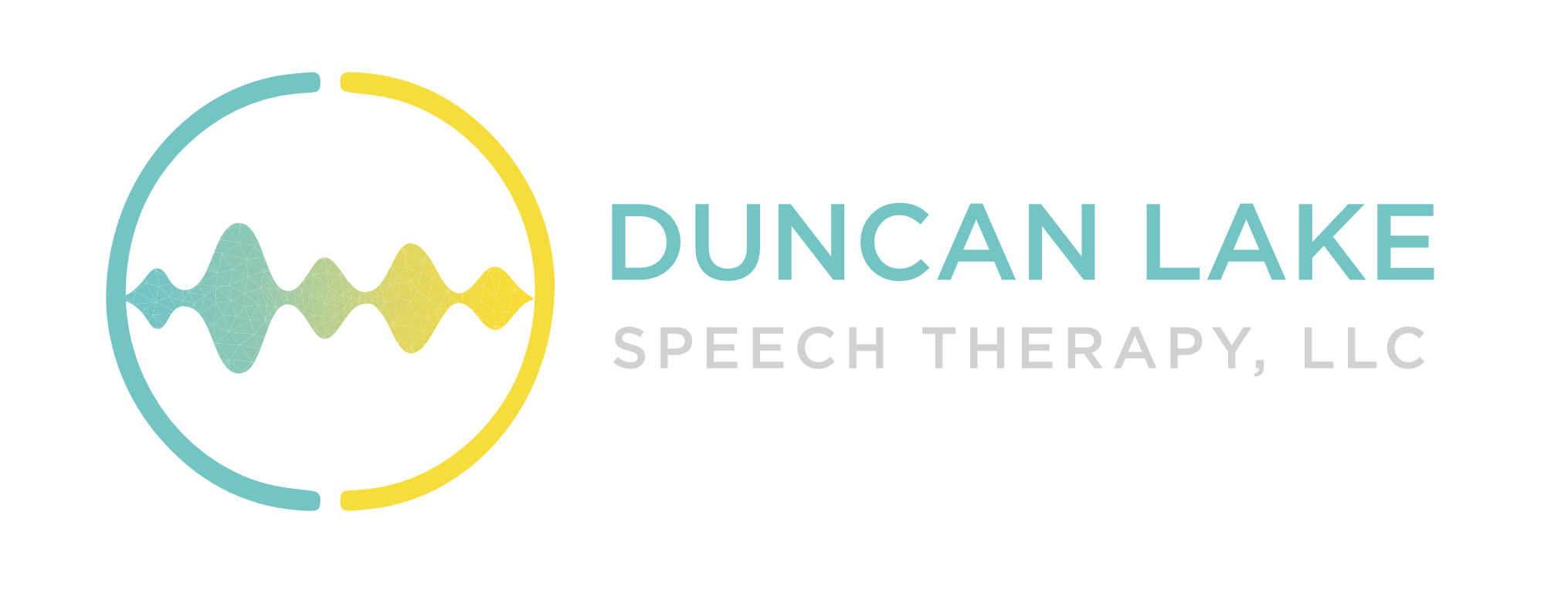by Tamiko Teshima, M.A, CCC-SLP
Practice Owner & Speech-Language Pathologist
Duncan Lake Speech Therapy, LLC
Happy National Speech-Language-Hearing Month! To celebrate the month, we wanted to talk a little bit more about our favorite topic – communication.
When people think about communication, they often picture conversation – two people talking, words flowing back and forth, maybe with a few pauses or laughs along the way. But communication is so much more than that.
It’s not just about talking. It’s about connecting. It’s how we stay safe, make decisions, and move through our day. It happens through spoken words, yes, but also through gestures, facial expressions, body language, signs, devices, writing, and so many other forms.
At Duncan Lake Speech Therapy, we believe communication is a human right. This National Speech-Language-Hearing Month, we’re reflecting on the powerful role it plays in connection, safety, autonomy, and daily life, not just for those with communication needs, but for all of us!

Connection
Think about the last time someone really made you laugh. Or the way a friend comforts you without saying a word. That’s connection! And it starts with communication.
Whether it’s sharing a story, making a joke, sending a text, using an AAC device, or even just a facial expression, communication is at the core of human connection. It helps us build relationships, repair ruptures, and show love and belonging.
Safety
From calling 911 to telling someone we don’t feel well, communication is a key part of staying safe. It’s how kids learn to ask for help, adults describe their pain to a doctor, and people advocate for themselves in unfamiliar or overwhelming situations. When communication is limited, safety can be compromised. That’s why we support tools and strategies that help all individuals, verbal or nonverbal, express their needs in a way others can understand.
Autonomy
Autonomy means being able to make your own choices and assert your boundaries—and communication is how we do that. Whether someone says “no,” uses a choice board, gives a thumbs down, or shakes their head, they are practicing autonomy. We believe everyone has the right to communicate their preferences and boundaries in a way that works for them.
Daily Life
So much of daily life depends on communication. From ordering a snack to participating in class, making plans with friends to following a bedtime routine—communication is the bridge that connects us to participation. At DLST, we believe in supporting functional communication that empowers individuals to live fully and confidently in their day-to-day world.
Final Thoughts
Communication isn’t always verbal. And it’s certainly not one-size-fits-all. That’s why we approach each client with curiosity, respect, and the belief that every individual deserves the tools to express themselves—and be heard.
This May, we invite you to think about the role communication plays in your life, and the lives of those around you. And if someone you love is struggling to communicate, know that we’re here to help.



Recent Comments